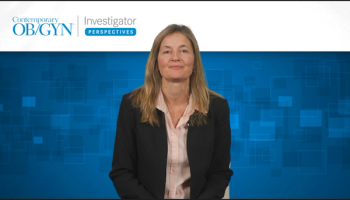
Patient Profiles for Combined Hormonal and Progestin-Only Contraceptives
Panelists discuss how ideal candidates for combined hormonal contraceptives are those medically cleared for estrogen use who prefer predictable monthly periods, while progestin-only methods are recommended for patients with estrogen contraindications such as elevated body mass index (BMI) combined with older age or hypertension with migraines.
Episodes in this series

Video content above is prompted by the following:
Patient selection for combined hormonal contraceptives should prioritize individual preferences and medical eligibility over prescriptive demographic categorizations. The most effective approach involves comprehensive contraceptive counseling that presents all available options, allowing patients to self-identify their preferences based on lifestyle factors, personal experiences, and contraceptive goals. Ideal candidates for combined hormonal contraceptives are those who, after medical clearance for estrogen-containing methods, express preference for these options due to their desire for predictable monthly bleeding patterns, familiarity with daily pill-taking routines, or specific noncontraceptive benefits such as acne management.
Medical eligibility screening focuses primarily on identifying contraindications to estrogen exposure, with hypertension and migraines with aura representing the most commonly encountered exclusion criteria in clinical practice. The CDC's US Medical Eligibility Criteria provides evidence-based guidance for contraceptive safety assessment, recently updated to reflect current research on various medical conditions. Health care providers should utilize the free mobile application to ensure accurate, up-to-date eligibility determinations that consider individual patient risk factors while avoiding unnecessary restrictions that might limit contraceptive access.
Progestin-only contraceptives serve patients who cannot safely use estrogen-containing methods or who prefer these options after comprehensive counseling. The introduction of a new drospirenone-only pill has expanded options for patients requiring nonestrogen methods, offering improved efficacy data and more forgiving missed-pill windows compared with traditional progestin-only formulations. Patients older than 35 years with a BMI exceeding 30 represent a key demographic for progestin-only methods due to multiplicative venous thromboembolism risks associated with age and weight factors. The improved bleeding profiles and ovulation suppression characteristics of newer progestin-only formulations make these methods increasingly attractive alternatives for patients requiring estrogen-free contraception while maintaining the familiarity of daily pill administration.
Newsletter
Get the latest clinical updates, case studies, and expert commentary in obstetric and gynecologic care. Sign up now to stay informed.










